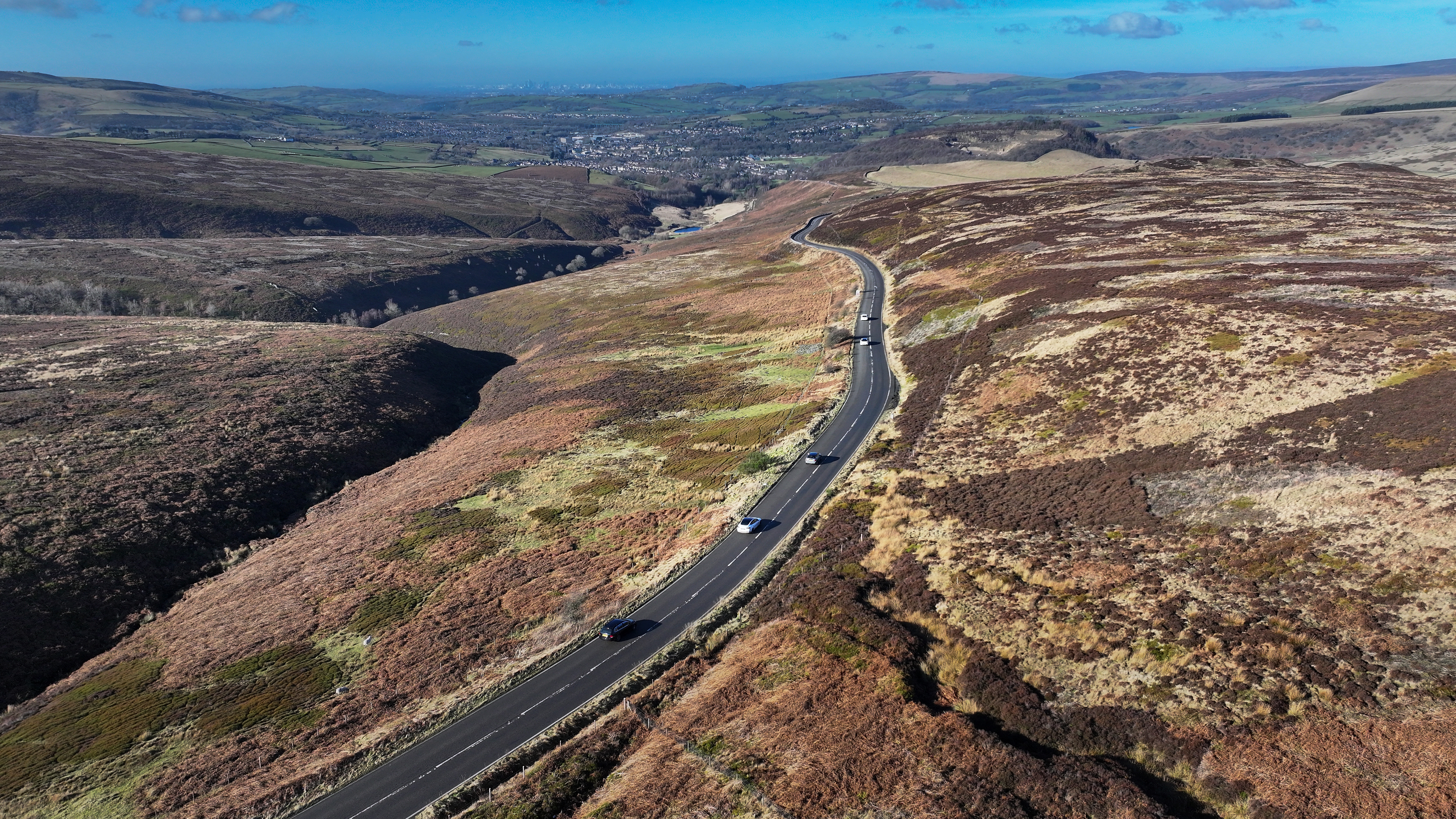Could an iconic British cycling climb really close to cars – and what would happen if it did?
The future of Snake Pass hangs in the balance with recurring landslips and millions needed to carry out work


Ongoing wranglings have seen the future of the iconic UK climb of Snake Pass called into doubt, with it widely speculated that it may end up having to close to cars permanently.
The climb, located in in the Peak District, has been beset by landslides over the years, and now Derbyshire County Council (DCC) says it can no longer afford the maintenance that the road needs.
The pass, which takes its name from the old Snake Inn on its eastern flank, connects Manchester and Sheffield on the A57 road. The Manchester side, rising 6km from Glossop at 5.7% according the the cat-two Strava segment, is general favoured by bike riders for its scenic views and Alpinesque twists and turns.
Snake Pass has been the scene of many a cycling hill-climb race, with Glossop Kinder Velo still running an event on its slopes every year.
Topping out at 512 metres and being subjected to a lot of brutal weather, Snake Pass is no stranger to closures. Snow often makes it impassable, and last October it shut for 10 days for repairs. It has always reopened, though.
Now, with landslips recurring and one section of the road reduced to a single lane controlled by traffic lights, DCC says the Snake needs more serious work to secure its future.
A DCC report suggests that around £4 million is needed to strengthen the area around one particular landslip site, while a full report has also been commissioned to cost work needed around other recurring landslip sites.
Get The Leadout Newsletter
The latest race content, interviews, features, reviews and expert buying guides, direct to your inbox!
The council has approached central government for financial help, but the Department for Transport told the BBC it is "not responsible for Snake Pass".
Who will blink first in this battle of bureaucratic wills remains to be seen. But for now the idea of a Snake Pass closed to cars hovers on the horizon.
For cyclists, it's a tantalising thought. One of England's most iconic hills, devoid of cars, available for use as a two-wheeled playground.
Simon Warren, author of 100 Greatest Cycling Climbs, cautions against delusions of Snake Pass becoming a cycling Disneyland.
"It would quickly fall into disrepair," he told Cycling Weekly. "It might be great for the first couple of weekends, but then the moss will come and the sheep and stuff before, you know, it'll be a dirt track.
"Our road bikes, we wouldn't be able to use them if the roads weren't built for cars," he added. "Without the car, we wouldn't have the facility to ride our bikes. So the two have to go hand in hand, and we have to share the space."
Bryn Adams of local cycling club Glossop Kinder Velo agrees.
"We don't really think it's likely to close permanently to cars, and I don't think it'd be a particularly good thing if it did happen," he said. "I think it would just be neglected. I don't really see the funds being there to maintain it just for cyclists and walkers and so on. I think if it closed to cars it would just fall into disrepair and not be safe for cycling."
So, share and share alike is the message, but as both Warren and Adams are quick to concede, Snake Pass's trunk-road status and the traffic that goes with that does not always make it fun to ride a bike up.
"I didn't put it in my [first] book," Warren says, "because, again, this reputation of being so busy and dangerous… I don't want to send people to their deaths. When I did the regional book, I couldn't really ignore it any further."
Adams adds: "There are regular fatalities on Snake Pass – mainly motorcyclists – so it's not a safe road for other road users, let alone cyclists.
"It's fine for club riders who are confident and know the risks and often cycling groups. But in terms of encouraging more people to cycle or people to get out on their bikes… I wouldn't ride up there with my kids, not in a million years, because it isn't a safe road."
So if it's no good as it is, but the answer is not to close the road either – what is to be done about Snake Pass?
One thing that isn't about to happen is the installation of gold-standard cycling infrastructure such as a separate cycle lane. As Warren says: "You know, a metre either side, that's not going to happen.
"That's the sort of infrastructure project that would cost us £100 billion," he jokes.
For Adams, some simple measures would be all it takes to considerably heighten the safety for cyclists and others on the pass.
"Rather than an extreme solution like closing the whole road or closing it to motorists, they could protect the road by keeping heavy vehicles off it," he says, "and they can probably make the road a lot safer for everyone if they effectively enforced the speed limits."
He also suggests using warning signposts to alert motorists to the potential presence of cyclists – an economical measure compared to the cost of keeping the road itself maintained.
"We all see that it's important that motorists are able to use it, but the important thing is safety. It needs to be made a safe road."
To be made a safe road, it also needs to be kept an open road, and all of those who use it will be keen to see the result of the current to-ing and fro-ing between DCC and government. I predict that as such an important thoroughfare, a way will be found to do this.

Thank you for reading 20 articles this month* Join now for unlimited access
Enjoy your first month for just £1 / $1 / €1
*Read 5 free articles per month without a subscription

Join now for unlimited access
Try first month for just £1 / $1 / €1
After cutting his teeth on local and national newspapers, James began at Cycling Weekly as a sub-editor in 2000 when the current office was literally all fields.
Eventually becoming chief sub-editor, in 2016 he switched to the job of full-time writer, and covers news, racing and features.
A lifelong cyclist and cycling fan, James's racing days (and most of his fitness) are now behind him. But he still rides regularly, both on the road and on the gravelly stuff.
You must confirm your public display name before commenting
Please logout and then login again, you will then be prompted to enter your display name.
-
 'I'll take a top 10, that's alright in the end' - Fred Wright finishes best of British at Paris-Roubaix
'I'll take a top 10, that's alright in the end' - Fred Wright finishes best of British at Paris-RoubaixBahrain-Victorious rider came back from a mechanical on the Arenberg to place ninth
By Adam Becket Published
-
 'This is the furthest ride I've actually ever done' - Matthew Brennan lights up Paris-Roubaix at 19 years old
'This is the furthest ride I've actually ever done' - Matthew Brennan lights up Paris-Roubaix at 19 years oldThe day's youngest rider reflects on 'killer' Monument debut
By Tom Davidson Published